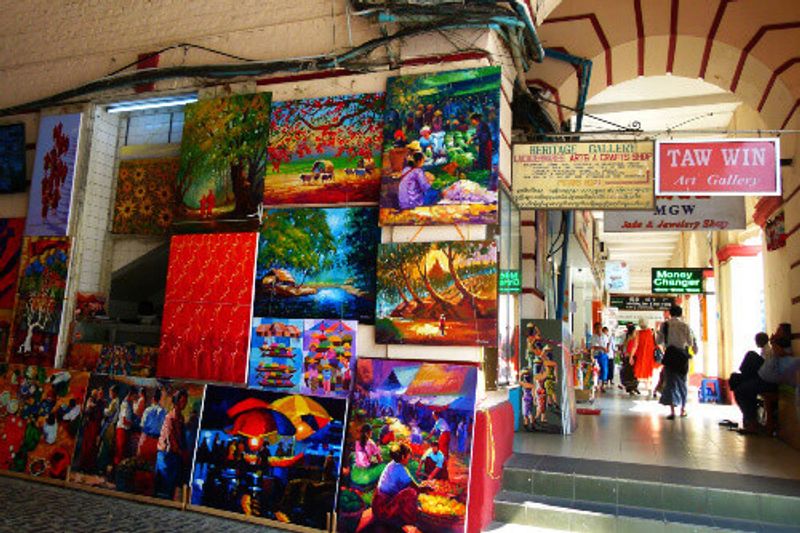THANK FOR YOUR INTEREST
We will contact you soon. How shall we contact you?
Or
Leave us you email
We will contact with you soon. How can we contact you?


HIGHLIGHTS
– Discovering art galleries of Yangon
– Meeting and having conversations with self-taught artists
– Visiting the local Bokyoke market
A full-day tour dedicated to the discovery of many different galleries to give you a glimpse of Burmese contemporary art.
Visit the art galleries of Yangon, where you’ll meet and learn about the visions of self-taught artists from all over the country.
Our guide will first take you to the River Gallery, Myanmar’s premier art space, located in downtown Yangon and home to works by the country’s leading artists. It’s also a source for news and views about Myanmar’s art scene and a platform to discover and promote emerging artists.
The next gallery is Bo Aung Kyaw gallery, founded by well-known artist Khin Zaw Latt and his wife artist Ohmmar in February 2012. We strongly recommend that you take some time to have a meaningful discussion with the artists and listen to their life stories and their perception of the country. These extremely talented people are impressive, as they are mainly self-taught artists seeking to express their visions and feelings in any form of art.
Your driver will then take you to the Bokyoke market, where you can discover more art galleries and local handicrafts. There are more than 2,000 stores to explore, offering the largest selection of craftworks and typical products from all over the country. You can find fabrics, gemstones (jade, rubies, and sapphires), basketry and woven bamboo, lacquerware, puppets, or antiques…
Useful Information
Full day
English Speaking Guide
Bogyoke market closes on Mondays, full moon days and public holidays.



